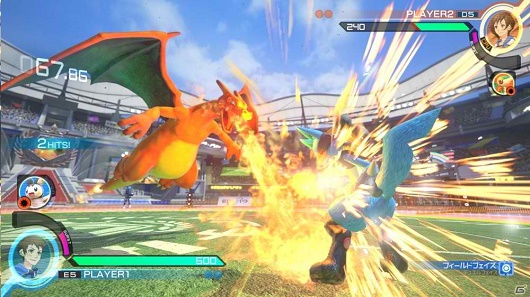Vortexes and 50/50s are standard fighting game notions. To define these, we're going to use Payoff Matrices from Game Theory. The aggressor will always be in the left position, and the defender in the top position. For those who are unfamiliar with basic Game Theory, You can the short video below for further demonstration:
A 50/50 is a situation where two options are available to both players. In this matrix, C and D are two numbers that have no relation to each other. This assumes that the aggressor winning the 50/50 gives the same payoff for each option, and that the defender winning gives the same payoff for each option. In this matrix, there is no Dominant Strategy or Nash Equilibrium.
50/50 Option 1Option 2
Option 1 C, -C-D, D
Option 2 =-D, D C, -C
A vortex is a type of 50/50 where when the aggressor wins, it resets back into the same situation, but if the defender wins, they escape the vortex and a completely new situation arises. In this matrix, A is some number greater than some number B. This assumes that the difference in damage done to the opponent is negligibly different, and the main payoff for the aggressor winning is that the situation reset into itself. Again, there is no Dominant Strategy or Nash Equilibrium.
Vortex Option 1Option 2
Option 1 A, -A -B, B
Option 2 -B, B A, -A
The matrix above is defined as “The Standard Half,” or “The Half,” after the 50/50 mix up. This is the main type of vortex seen in fighting games, but there infinitely more possibilities.
33/33/33 and Nths
The Third comes naturally out of the Standard Half. This is a payoff matrix that represents a vortex in a 33/33/33 situation. However, we have a problem. There is no Standard Third because of the 67%/33% dichotomy. Instead we have two Thirds. We will name the first third Azoth’s Third after Azoth’s proposal. In Azoth’s Third, the situation is favored for the defender, as that player will escape roughly 67% of the time. Here, for every option the aggressor has, the defender has two options that will win out.
Azoth’s Third Option 1 Option 2 Option 3
Option 1 A, -A -B, B -B, B
Option 2 -B, B A, -A -B, B
Option 3 -B, B -B, B A, -A
However, there is another Third that can conceivably fit the 33/33/33 description, the Aggressor’s Third. In the Aggressor’s Third, the situation is favored for the aggressor, as that player will reset the situation roughly 67% of the time. Here, for every option the defender has, the aggressor has two options that will win out. It is obvious that the Aggressor’s Third is the polar opposite of Azoth’s Third.
Aggressor’s Third Option 1 Option 2 Option 3
Option 1 -B, B A, -A A, -A
Option 2 A, -A -B, B A, -A
Option 3 A, -A A, -A -B, B
This can be further expanded to an Nth. An Nth is a vortex where each player, the aggressor and the defender, have N options and the chance of winning for either side is 1/N or 1 - 1/N. All Nths also have the special property of having no Nash Equilibrium or Dominant Strategy.
Further Research
It could be possibly beneficial to find the Fourths and Fifths to see if there are further conclusions that can be drawn about Nths. My current hypothesis is that for each individual number X, there are (X - 2) + 1, or more succinctly, X -1 Xths. This goes beyond the scope of current fighting games, but may have uses in Turn Based Strategy games and AI.
For more Pokken Tournament tips and guides, come and join our facebook gaming community @ facebook.com/webjunkiesblog.
